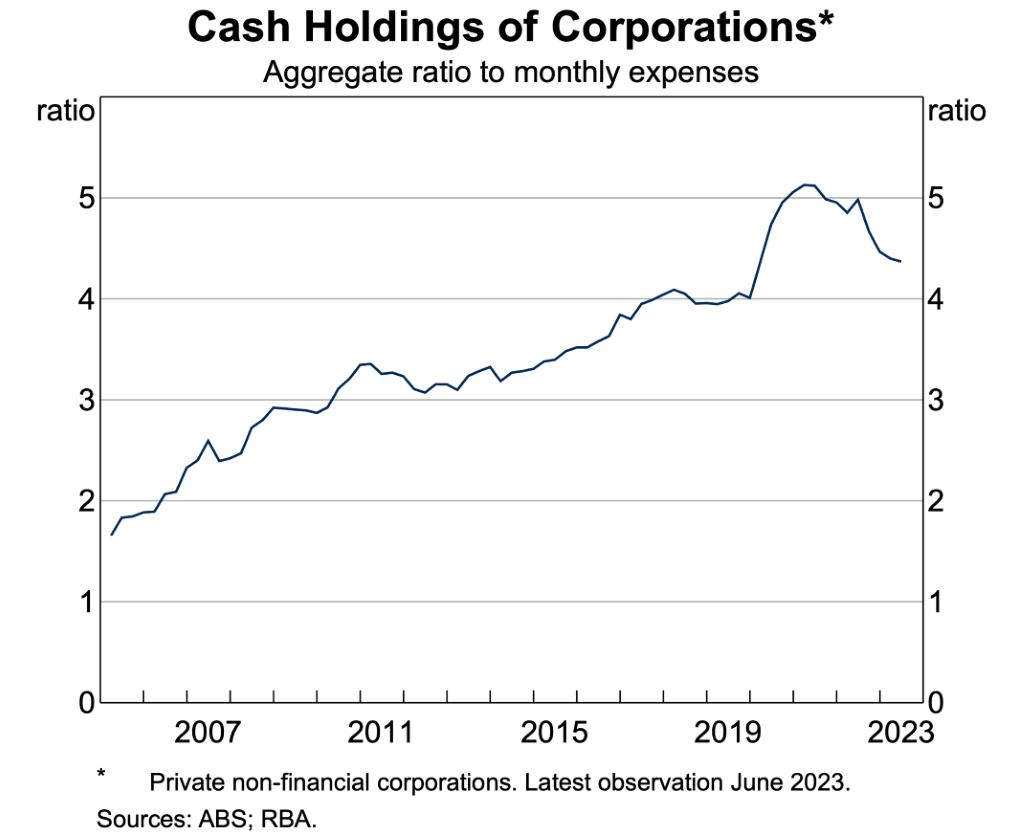Business Value Acceleration
Key learnings for business from the RBA’s latest financial stability review

The RBA’s latest Financial Stability Review published in October 2023 sheds light on the resilience of Australian households and businesses. There are three key messages to highlight:
1. Margin pressure is increasing due to slowing demand.
2. Cash buffers remain high.
3. Insolvencies are increasing but are largely small businesses with small debt levels (mainly non-bank lenders and the ATO).
Despite a strong recovery from the pandemic that supported business profitability, pressures have emerged from higher input costs, higher interest rates, and slowing demand. While most businesses were able to pass on higher input costs due to strong demand over the past couple of years, ongoing cost pressures coupled with a softening in demand have put pressure on some businesses’ profits recently. As per firm-level data, operating profit margins as of March 2023 are around their pre-pandemic levels in most industries, excluding the mining sector. However, profit margins have declined a little in the accommodation and food industry (Graph 2.14).

Many businesses are struggling with profitability issues and are using their cash reserves to keep their operations running or pay off debts. However, even with these withdrawals, their cash reserves are still relatively high compared to their expenses. In fact, these reserves have increased significantly over the past few decades especially during the pandemic, as shown in Graph 2.17. Additionally, information from listed companies confirms that many of them also have substantial cash reserves.

The risks to the broader financial system due to the business sector are low. Strong demand has enabled most businesses to pass on higher input costs, and cash buffers remain high. However, the distribution of cash buffers across businesses is likely to be uneven. Although the number of company insolvencies has increased to pre-pandemic levels, these businesses tend to be small and have little debt. Only a limited amount is owed to banks, and hence, it has had a minimal impact on them. But, a decrease in demand in the economy poses a significant risk to businesses’ profits and their ability to service debts. Businesses that rely on discretionary consumer spending or those who cannot cut costs quickly during a revenue decline, such as those in the arts and recreation or business services industries, would face major profit declines. Highly indebted businesses that are already drawing down on their cash buffers will find it most challenging to cope with the pressures on profits. They are also likely to reduce their workforce, causing financial stress to households.
Interested in offering staff a stake in your business?
Get your free ESS guide.







